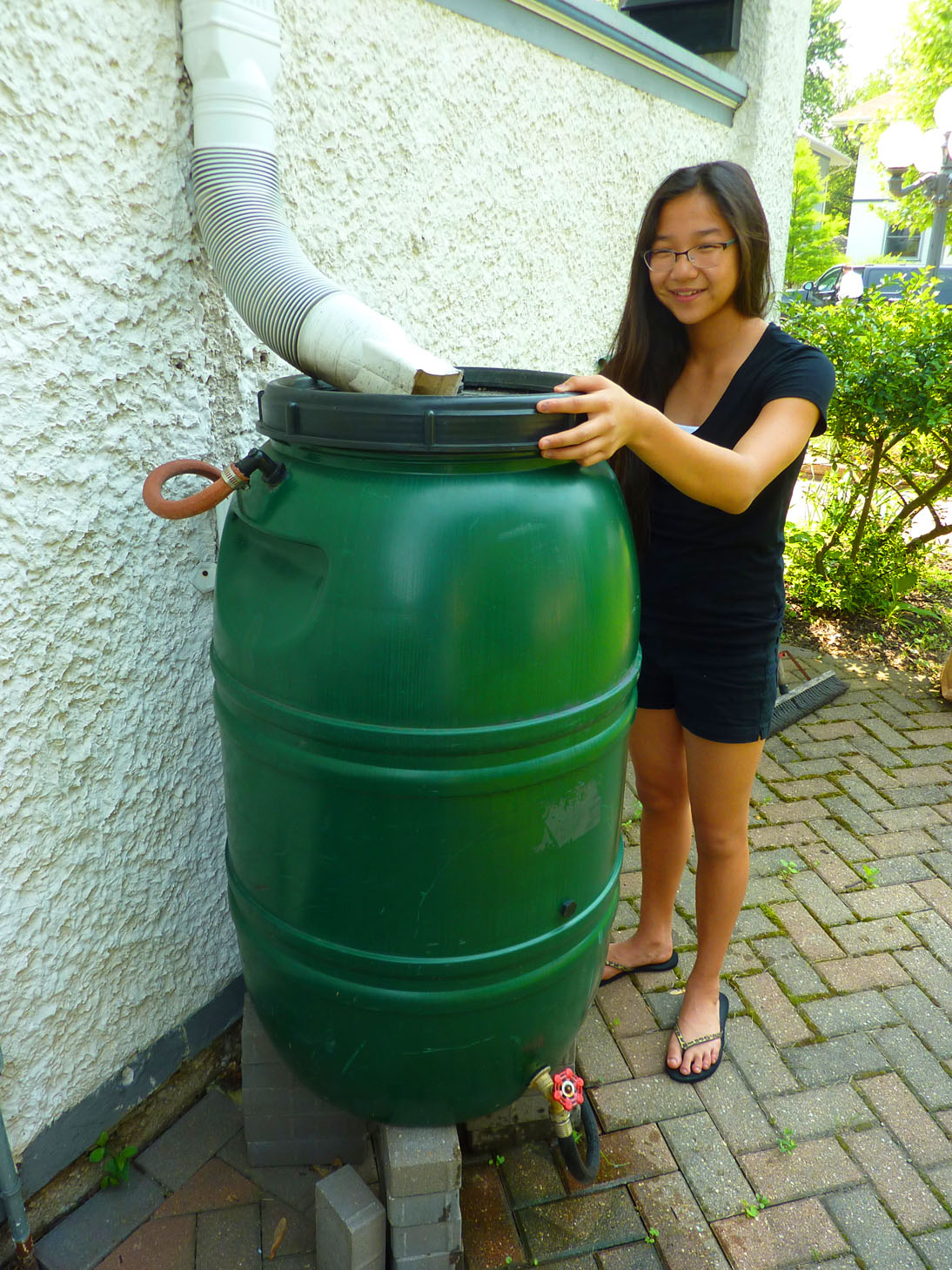Oak Parker Kiana Gill checks one of her family rain barrels.
By Lisa Biehle Files
The Village of Oak Park has been flooded with requests for rain barrels since announcing a new give-away program. Already, Environmental Services Manager Karen Rozmus has ordered 536 rain barrels from the Metropolitan Water Reclamation District of Chicago, the partner and financial backer for the project. Up to four 55-gallon rain barrels (in blue, gray, terra cotta or black) are available for each qualified household. The Village of River Forest also has a program that offers discounted rain barrels. Read on for more details. There are several benefits to using rain barrels.
Save Money Rain barrels take the water that drains from roofs to gutters to sewers, and divert it for use in yards and gardens, free of charge. In a Wednesday Journal article, David Hammond estimated that he collects 200 gallons of free rain water per downpour for use on his large vegetable garden. This system is much more efficient, in terms of price and energy expended, than paying for tap water, which is pumped and treated from Lake Michigan.
Additionally, rain water from our area travels through sewers to the world’s largest water treatment plant in Stickney, where it is treated and then discharged to wind up in the Mississippi River.
Use Pure Water Rain water is free of chlorine, lime and calcium, which means it can be healthier for plants, according to some gardeners. Though it is not potable, rain water is also good for watering lawns, washing cars, and cleaning outdoor tools and furniture.
Metropolitan Water Reclamation District President Mariyana Spyropoulos explained, “Attaching a rain barrel to a downspout provides very high quality water for beneficial use and intercepts water that might flood a basement.”
Prevent Flooding Increased development from buildings, pavement, and other impervious surfaces has caused more water to run into sewers. Using rain water is a terrific way to reduce the amount of water going into the sewer system, which can become over-burdened during heavy rainfall, and thus cause basement backups and sewer overflow. Simply adding an extender to a rain barrel can divert overflow rain water out onto a lawn or into a second rain barrel during heavy rains.
Help Your Watershed A Continental Divide runs directly through Oak Park. This means that those who live east of the divide and put rain water back into the soil will eventually replenish Lake Michigan. Those who live west of the divide will replenish the Mississippi watershed by using rain water on their gardens and lawns.
Rozmus recommends elevating a rain barrel about 12 inches from the ground. Concrete blocks or pressure treated wood can make a strong platform. Attach a hose to the spigot near the bottom; the added height will help gravity send water through the hose and to your plants and flowers. If you have a favorite watering can, make sure it will fit under the spigot.
Families must disconnect their downspouts from the sewer in order to qualify for up to four free rain barrels made from recycled materials. Program applications are available at Village Hall, 123 Madison St., the Public Works Center, 201 South Blvd, or apply at www.oak-park.us/rainbarrels. For more information, call 708-358-5700 or email publicworks@oak-park.us.
Residents of River Forest may purchase rain barrels from the Metropolitan Water Reclamation District of Chicago at this link.


